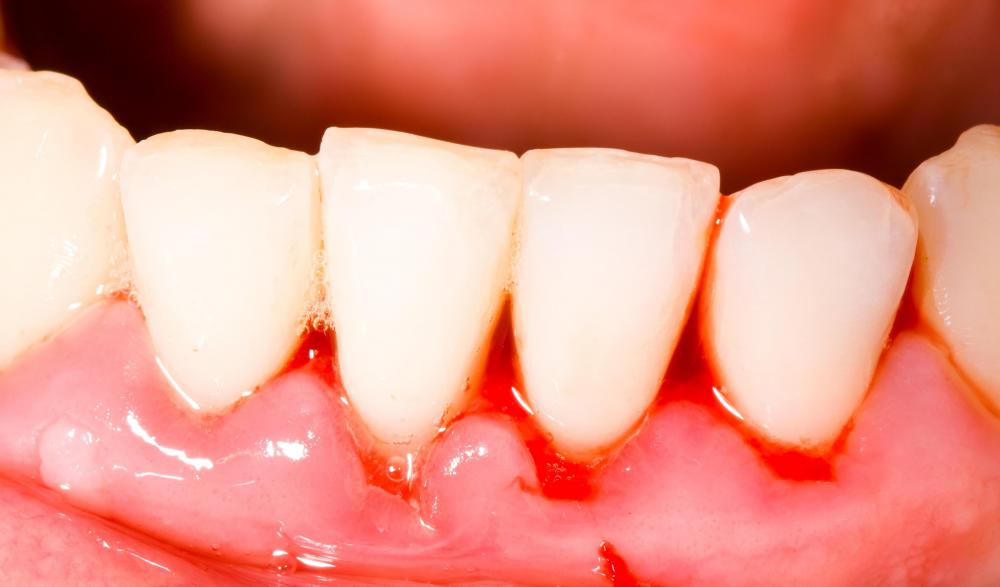At WiseGEEK, we're committed to delivering accurate, trustworthy information. Our expert-authored content is rigorously fact-checked and sourced from credible authorities. Discover how we uphold the highest standards in providing you with reliable knowledge.
What is an Oral Irrigator?
An oral irrigator is an oral hygiene product that thoroughly and gently cleans teeth and gums. It uses a rapidly pulsating jet of water to thoroughly clean under the gum line and between teeth better than floss. The stream of water is gentle on even the most sensitive gums, with adjustable pressure settings, and massages the gum line to promote ultimate gum health.
The oral irrigator uses a hose system with a nozzle at the end that releases a pulsing jet of water. The water jet pulses 1,600 times per minute, and the force of the water is adjustable with most models. The pulsating water helps to get rid of food particles trapped between teeth and under the gums, reducing bacteria that causes gum diseases like gingivitis. The user manually directs the nozzle to clean teeth and gums.

The hose picks up water from the base of the oral irrigator, which contains a water reservoir. The reservoir should be filled fresh with each use with lukewarm water. Water pressure is created from a water pump, which requires electricity. Some models are battery operated, while others need to be plugged in. As always, be very careful with electrical sockets in the bathroom to avoid electrocution.

Before using an oral irrigator, it is important to read the directions carefully. Improper use of oral irrigators can cause gum damage. The nozzle tip should be at a right angle to the gum tissue at all times. Allow the natural water flow from this angle to thoroughly clean under the gum line. Do not aim the water jet under the gums, as this will cause gum damage.
Using an oral irrigator is easy and straight forward. Start by deciding whether to start on the top or bottom row of teeth and begin at the furthest molar back. Move the water jet slowly along the gum line at a 90 degree angle, pausing between each tooth. Continue to the farthest molar and move around the tooth and clean along the back of the teeth. When one half of the mouth is finished, repeat on the second half to clean all teeth.
For best cleaning, most dentists recommend using an oral irrigator after brushing and flossing. The concentrated water jet cleans areas that the toothbrush and even floss can't reach. Oral irrigators are often referred to as water flossers because they are a great alternative for people who can't or have a difficult time flossing regularly.
The oral irrigator is highly recommended for people with sensitive gums. Flossing can be difficult to impossible for people with sensitive, bleeding gums. Water is much gentler on the gums and actually cleans better than floss. This device not only cleans the gums, but also gently massages them, increasing blood flow and stimulating gum health.
AS FEATURED ON:
AS FEATURED ON:












Discuss this Article
Post your comments